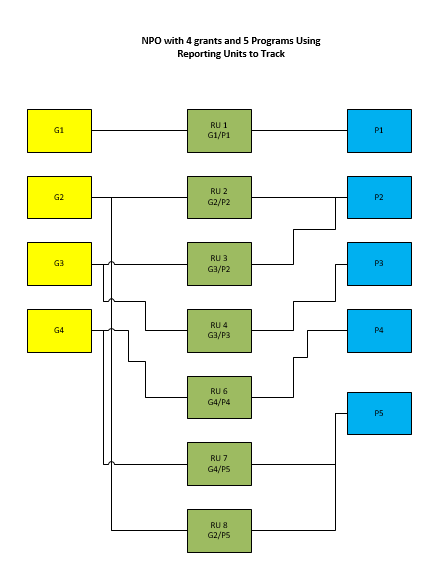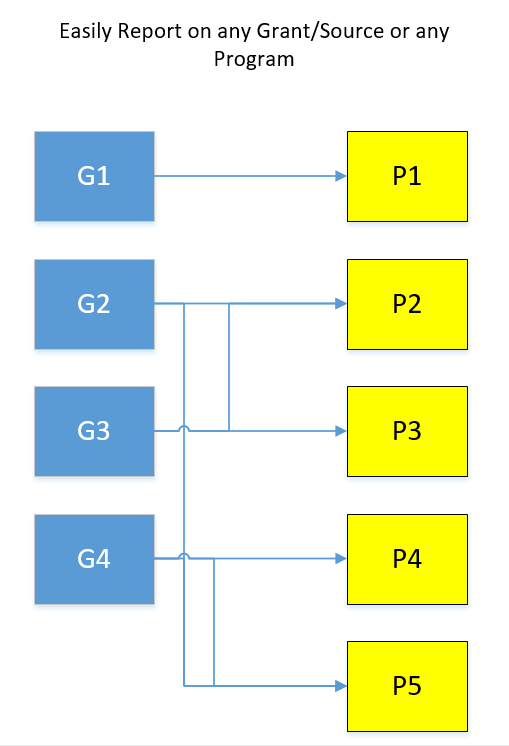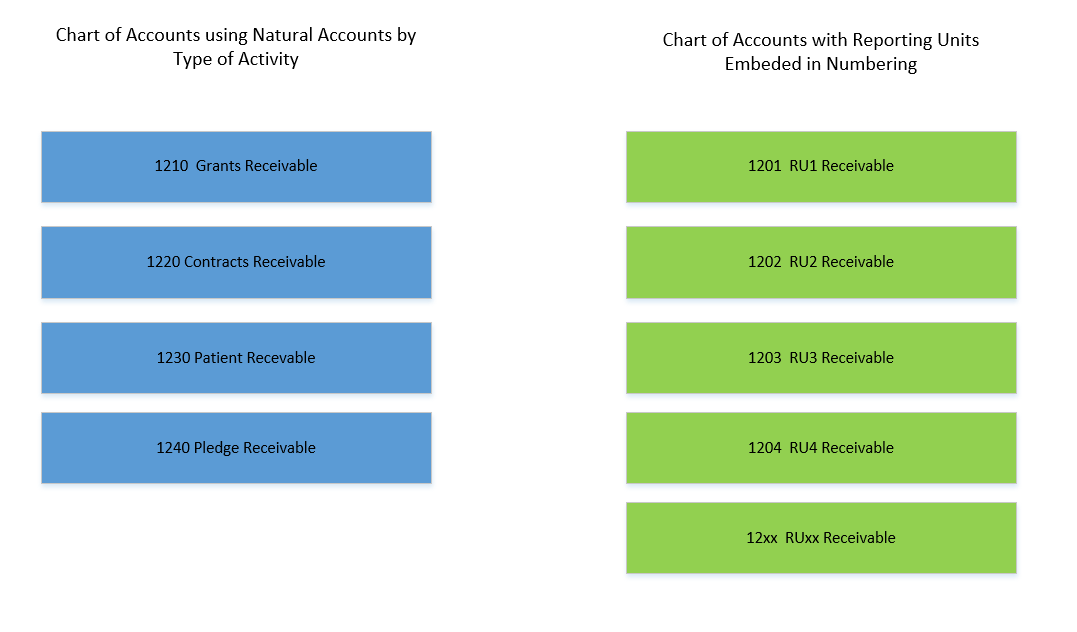 Many commercial accounting products have 2 elements - a natural account and a department - and this works fine for commercial entities. In a nonprofit with multiple funding sources this quickly causes reporting issues.
Many commercial accounting products have 2 elements - a natural account and a department - and this works fine for commercial entities. In a nonprofit with multiple funding sources this quickly causes reporting issues.
We regularly work with nonprofits (NPOs) who use commercial accounting software and don’t understand why the software products designed specifically for NPOs offer more than 2 elements or dimensions in their account structures.
I was recently at a mid-sized NPO using a commercial product with two elements, a “Reporting Unit” (RU) and an object code or natural account element.
So I asked them, what is a Reporting Unit? They explained it was a combination of a grant/contract and a program delivering services. I was curious whether they had any programs that had multiple contracts/grants. Yes, they did.
I had another question, if that happened would each contract/program combination have its own Report Unit number; how were consolidations handled? If they wanted the whole program they would have to add together several RUs, typically in Excel.
This generated another question; did one grant ever fund more than one program? Yes, that was also the case and the answer was the same, they would have to add multiple RUs together to report the whole grant.
The following diagram depicts the complexity when you have four grants funding five programs:
While it’s certainly feasible to handle things this way, somebody has to remember or document that RU2 is a combination of G2 and P2, while RU3 is a combination of G3 and P2 and if you want the total expenses of G2 you need RU2 and RU8, etc.
In a multi-dimensional account structure there would be an element for the funding source and an element for the program, making it very easy to sum up all activity for either in the report writer. Also there’s no cross walk needed to use RU3 if you want the combination of G2 and P2. You just need to know who paid for it (G2) and who used it (P2) and you are done!

Because of the limitation of the Reporting Unit system, another misuse is using the object code or natural account to both describe the type of transaction as well as the owner or responsible party for the transaction.
Object codes should have a single purpose: to describe the type of transaction. For instance in Accounts Receivable you might have four types of receivables such as Grants Receivable, Contract Receivable, Patient Receivable and Pledge Receivable (if you have a Development program). If you run a consolidated financial statement, either Statement of Position or Statement of Activity the natural accounts should provide a simple roll up of the activity across programs and fund sources.
If you don’t have the source (grants) and use (programs) a user may resort to the natural accounts to track various activities. I recently saw an account structure with a receivable account for each funding source! That means somebody has to define a report that adds them all together, or move the reporting to Excel to sum these accounts.
Again in a multi-dimensional chart of accounts you would book receivables against each grant/contract and you could easily track it or total them all up as one Grants Receivable number in a Consolidated Statement of Position.
Another advantage to a multi-dimensional account structure is when you look at a Trial Balance type report in detail. Errors in Grant/Program coding may stand out more clearly because you can tell what the fund source and program is and spot the transactions that don’t belong in a particular grant/contract.
All of this assumes you have a report writer that makes it easy to sort and sum a multi-dimensional account structure. That ability has been an integral part of the AccuFund Financial Report Writer since the inception of the product in 2001. AccuFund provides the ability to sort by any element and sum across elements to provide needed reporting by funding source or program. It’s one of AccuFund’s financial reporting strengths.
If you depend on spreadsheets for your reporting or have to manually track and summarize multiple units for reporting purposes you should look at current solutions designed specifically for nonprofit accounting.
Reporting is the reason you have a financial system.
When you are selecting a nonprofit financial system think about your reporting needs and make sure any system you look at can meet your specific reporting requirements.
AccuFund, Inc. is 100% focused on serving nonprofits and government entities. The complete fund accounting financial management solution, available online or onsite, consists of a strong core system and modules that allow you to expand as your needs evolve.